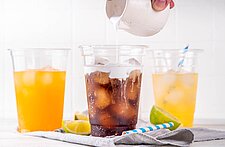This post is the second in a series of snacking habits of the Millennial generation. In the previous post we discussed the curiosity and willingness to experiment with new tastes and food experiences. We also discussed how more than one-third of Millennial’s snacked as a function of health and supplementation. This is an important finding. Let us explore this segment in more detail.
CLICK HERE to view Part 1 of this series!
Based on our research, Millennial healthy-eating choices are focused more on energy and vitality than on medical conditions or specially designed diets. Millennial’s are not a ripe market for diet foods.
A snack marketed as a diet snack will probably not fare well with this group. However, they will change their lifestyles to lose weight by increasing their intake of juices. The new “Paleo” or raw diets have become very popular with Millennials as are gluten free diets. The inclusion of pro-biotics into raw foods is also becoming a major trend.
Nearly 60 percent of Millennial’s who are heavily invested in their health are willing to pay more for natural or organic products as opposed to 43 percent of Baby Boomers (AlixPartners, 27 June 2012). In complementary research, according to the Hartman Group (as reported in June 2014 by Wray Research), “30 percent (of Millennials) eat foods that are certified organic, as compared to 21 percent of Gen X-ers and 15 percent of Boomers. The Hartman Group again stated: “They (Millennials) tend to eat four smaller meals a day at non-traditional times,” which again favors snacking.
Millennials understand the importance of whole grains and vitamin- and fiber-rich root vegetables, but as we mentioned in a previous blog, Millennials also still show a strong proclivity for snacking and portable products containing ingredients such as sprouted grains and rice, than to sit home and prepare whole grain cookies.
CLICK HERE to view WHITE PAPER - Millennials Drive Flavored Vodka Sales
They will sometimes consume very indulgent, high calorie foods just for the fun of it, but they generally throw up a caution when it comes to artificial anything – especially sweeteners.
Liquid Meal Replacements
It is no accident that Starbucks dropped the word “coffee” from their logo. While millions still flock to the mega-coffee chain for their morning brew, they are recognizing that
Millennials are now more likely to reach for something nutritionally dense and less processed, like a fresh-pressed juice for an energy boost. This is why the chain added smoothies several years ago. However, even that trend is evolving.
Millenials are moving on from dairy-based smoothies and drinking pure, freshly extracted juices of fruits and vegetables — whether homemade or purchased. It will be interesting to see how the major chains respond.
CLICK HERE to view Millennials in the USA - A 4 Part Symrise Series
While complete juice cleanses have become more popular, with some people drinking raw juices every day, several times a day, most people are casual juicers and simply enjoy taking nutritious foods into their bodies every so often.
Nevertheless, the snacking trends of health conscious Millennials will be an influence to snack foods in the future. We can envision more organic snacks, higher protein snacks, more vegetable and grain snack combinations, raw snacks (perhaps frozen), more vegetable based snacks and gluten-free snacks. Millennials will become increasingly particular about the origins of the foods they eat and the manner in which the snack foods were manufactured.





